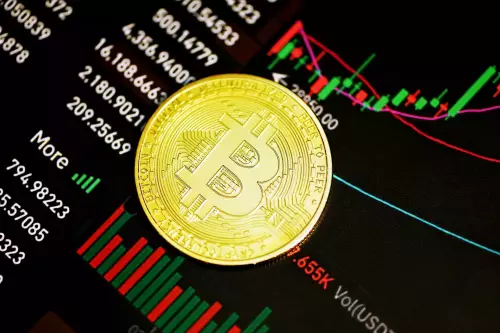 |
|
 |
|
 |
|
 |
|
 |
|
 |
|
 |
|
 |
|
 |
|
 |
|
 |
|
 |
|
 |
|
 |
|
 |
|
Cryptocurrency News Articles
Ethereum Prepares to Reach a Decisive Milestone With EIP-7928
May 18, 2025 at 04:05 pm
With EIP-7928, a bold proposal has just been presented to introduce parallel execution of transactions on Layer 1.

A groundbreaking proposal, EIP-7928, is stirring up the Ethereum community as it presents a unique approach to introducing temporary code execution capability for external accounts, otherwise known as EAs, in the Layer 1 architecture.
This addition would be a pivotal milestone in the ongoing discussion on optimal scalability strategies for the Ethereum network.
The proposal, authored by several developers including Toni Wahrstätter, focuses on introducing what are called Block-Level Access Lists (BALs).
“It is a mechanism that is used to enable parallel execution of transactions and block validation,” Wahrstätter explained on Monday on X, formerly Twitter.
This integration is crucial as it allows for the efficient processing of transactions despite the time-consuming nature of smart contract execution.
To process a block, validators would need information on the transactions in the block, which would be fetched from external accounts. However, to read an external account, the account’s code would need to be executed.
But in the current system, executing an external account’s code to fetch information for a transaction would require executing the transaction itself, creating a cycle that slows down block validation.
BALs would list all the addresses and storage keys used in a block’s transactions, along with their values after the transactions are executed.
This structure would allow validators to perform parallel disk reads and validate blocks much faster.
“This could also allow an increase in the gas limit in the future,” Wahrstätter noted.
The proposal introduces three major technical components that would be directly integrated into blocks’ bodies to enable this new level in Layer 1 performance:
• BAL: A list of external accounts used in a block and the storage keys accessed by each account.
• EA Code: The code of the external accounts used in a block.
• Storage Values: The values of the storage slots accessed by the external accounts in a block.
After a block is fully processed, a new BAL would be prepared for the next block.
This structuring would allow validators to validate blocks much faster than before.
A Milestone in the Debate Between L1 Scalability and Dependence on L2s
Beyond its technicality, EIP-7928 is sure to enflame an old debate within the Ethereum community: should scalability efforts concentrate on Layer 1 or continue on the path of Layer 2.
This type of proposal reinforces the idea “that we should also focus on L1 improvements,” whereas some community members rely on rollup-type solutions to address congestion and high fees.
The implication of BALs is not to replace Layer 2s but rather to build up L1 as a more robust, faster, and competitive foundation.
In this instance, the roadmap of Ethereum appears to be coherently orchestrated. After activating the Pectra update, which notably introduced account abstraction and a new design for ETH staking, the network is heading towards Fusaka, expected at the end of 2025.
This upcoming evolution plans the introduction of PeerDAS, a technology for off-chain data sampling designed to reduce the cost of Layer 2s.
Thus, Ethereum seems to follow a dual strategy: strengthening its base while supporting its extensions.
Disclaimer:info@kdj.com
The information provided is not trading advice. kdj.com does not assume any responsibility for any investments made based on the information provided in this article. Cryptocurrencies are highly volatile and it is highly recommended that you invest with caution after thorough research!
If you believe that the content used on this website infringes your copyright, please contact us immediately (info@kdj.com) and we will delete it promptly.






























































